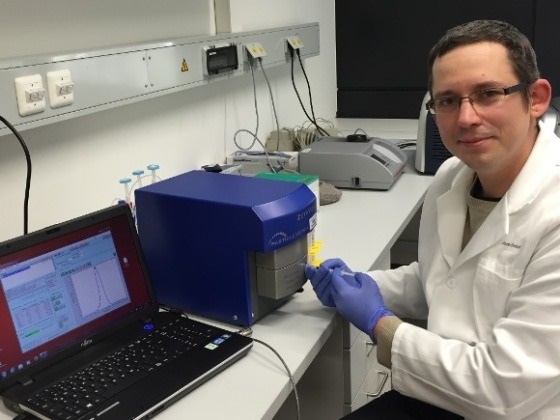Apr 29 2016
Particle Metrix, developers of versatile particle characterization solutions for the life sciences, report on the work of the Baur Laboratory in the Department of Dermatology at the University Hospital of Erlangen. The Group, which is part of the Translational Research Center at the University, is working to quantify extracellular vesicles in plasma of patients.

Jochen Dindorf with his Zetaview particle characterization system from Particle Metrix
Andreas Baur leads a group in the Department of Dermatology at the University Hospital of Erlangen. Their research focuses on the quantification of extracellular vesicles (EV) in plasma of patients. The group has used several different approaches as recently demonstrated in their paper published in EBioMedicine (03/2016). This reported on the quantification of EV-derived microRNA, the measurement of protein concentration in sucrose fractions that contain EV and the measurement of particles in sucrose gradient fractions. This work has been performed using the ZetaView system from Particle Metrix. Used together, these parameters provide a rough estimate on the relative concentration of EV in plasma.
The Baur group chose the ZetaView system for microparticle characterization because it is the only way to get actual numbers of nanoparticles in a given solution. All other measuring methods are semi-quantitative at best. However, it is advisable to consider particle measurements not as absolute numbers unless serial dilutions have been made and measured and different patient samples have been compared and, these again have to be in a comparable range of particle numbers.
Prior to using ZetaView, they did not use any EV quantification tool/device, but rather measured the concentrations indirectly as outlined above. As principle user of the system, Jochen Dindorf, says:
ZetaView is the only way to get actual particle numbers, rather than a semi-quantitative assessment of EV in a given solution, e.g. by western blot or RNA quantification. I also find it an easy instrument to teach new users how to use. This is really useful for our lab.
ZetaView allows the measurement of quantitative information on the number of particles in a particular preparation as well as basic physical information (i.e. size and zeta potential).